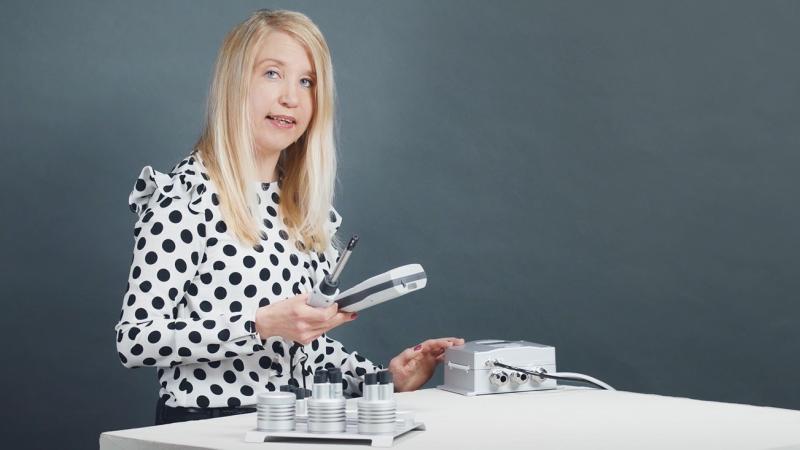Yhden pisteen kalibrointi paikan päällä – nopea ja helppo vaihtoehto
Suhteellisen kosteuden mittalaitteiden kalibrointiin ja viritykseen on monta lähestymistapaa. Täydellisessä maailmassa kaikki mittalaitteet tarkistettaisiin ja sertifioitaisiin akkreditoiduissa laboratorioissa korkeimpien standardien mukaisesti. Tosielämässä meidän täytyy kuitenkin löytää tasapaino ajan, kustannusten, teknisten vaatimusten, osaamisen ja kunkin yksittäisen sovelluksen tarpeiden välille.
Käyttäjät kysyvät usein suositeltavaa kalibrointiväliä valmistajilta. Tämä on sinänsä järkevä lähtökohta pohdittaessa, kuinka usein mittalaitteet tulisi kalibroida. Käytännössä kuitenkin mittalaitteen suorituskyvyn heikkenemisnopeus voi vaihdella käyttöolosuhteiden mukaan, joten asianmukaisen kalibrointivälin määrittäminen on tärkeää.
Mitä itse kalibroinnin suorittamiseen tulee, käytettävissäsi on useita vaihtoehtoja: voit perustaa oman kalibrointilaboratoriosi, lähettää mittalaitteesi kolmannelle osapuolelle laboratoriokalibrointia varten tai suorittaa kenttätarkistuksen tai yhden pisteen kalibroinnin paikan päällä itse.
Yhden pisteen kalibrointi paikan päällä hyödyntää mittanormaalia kiinteätoimisen instrumentin kalibroinnissa ilman tarvetta poistaa sitä käytöstä – tästä esimerkkinä on, kun teknikko tarkistaa kannettavalla laitteella seinään kiinnitetyn lähettimen. Tämän menetelmän pääasialliset hyödyt ovat nopeus ja helppous. Kenttämittalaitteelle ei tule käyttökatkosta, ja työaikaa ei kulu asennuksen purkamiseen ja uudelleenasennukseen. Menetelmän heikkoutena on kuitenkin, ettei siinä käytetä toista kalibrointipistettä, joka osoittaisi kenttämittalaitteen oikean dynaamisen vasteen. Jos mitatut olosuhteet pysyvät stabiileina lyhyen ajanjakson ajan, saattaa riittää, että puhaltaa anturiin ja havainnoi mittalaitteen vasteen ja palautumisen. Jos taas mitatut olosuhteet muuttuvat paljon, suosittelemme usean pisteen kalibrointia.
Kannettava Vaisala HUMICAP HM70 kosteus- ja lämpötilamittalaite on suunniteltu vaativiin kosteusmittauksiin pistetarkistussovelluksissa. Se sopii myös Vaisalan kiinteiden kosteusmittalaitteiden kenttätarkistuksiin. Seuraavat lähettimet voidaan kalibroida käyttämällä HM70-mittalaitetta: HMDW60/70, HMW61/71, HMD/W20/30, HMP130, HMP230/240-sarja, HMT320/330-sarja, HMM210-sarja sekä DMW19-lähetin.
Kun teet kalibroinnin kentällä, muista tarkistaa ja virittää kiinteän lähettimen lukema HM70-mittalaitteeseen kytketyn kalibroidun vertailumittapään mukaan. Yhden tai kahden pisteen kalibroinnit voi suorittaa teollisuuslähettimille ja -moduuleille (HMP230/240-sarja, HMT320/330-sarja ja HMM210-moduulit) käyttämällä Vaisalan MI70-näyttölaitetta ja Vaisalan HMK15-kosteuskalibraattoria.
Alla olevalla videolla käymme läpi, miten yhden pisteen kalibrointi ja viritys paikan päällä suoritetaan Vaisalan HMT330-lähettimelle käyttämällä Vaisalan HM70-mittalaitetta. Voit katsoa muita HMT330-lähettimen kalibrointivaihtoehtoja tästä.


Comment
Adjustment and calibration
Calibration means comparing the instrument reading with a reference. Adjustment is correcting the instrument to minimize deviation from the calibration reference. It is important to understand calibration uncertainty when deciding whether or not to make adjustments to your measurement equipment. The amount of calibration uncertainty varies depending on multiple factors, including temperature differences, the thermal mass of the instrument, and the measurement technology used. For this reason, it may not be wise to make small adjustments, because you may end up adjusting the random error and adding noise to your measurements as a result
Single-point calibration vs. multi-point calibration:
In single-point calibration, the calibration is performed at one point against the working standard by placing the reference instrument as close to the unit under calibration (UUC) as possible. It is important to allow sufficient stabilization time so that there is a temperature equilibrium between the working standard and the UUC. Single-point calibration is an effective way to maintain a sensor’s performance in applications where the operating conditions do not vary greatly. Sensors that operate at a stable temperature, humidity, pressure, and so on are ideal candidates for single-point field calibration.
Using a working standard and generator or chamber, which is able to produce various points enables the user to perform multi-point field calibration. The difference between one-point field calibration and multi-point field calibration is that the UUC must be removed from the process.
Laboratory calibration vs. field calibration
Laboratory calibration is the most accurate method of calibrating measurement equipment. It offers lower uncertainties than field calibration, environmental effects are minimal, and the number of factors that can influence the calibration process is significantly reduced. Field calibration provides the opportunity to perform rapid checks and diagnostics without the need to remove measurement equipment.
Handheld devices are especially good for quick pass/fail checks, but with a bit of extra care and attention, they can also be used to perform single-point calibration and adjustments in the field.
The GMP regulations specify only that sensors should be calibrated, and do not provide any guidance as to the specific calibration method. It is up to you to decide which calibration method is suitable for your application and will provide you with confidence in your measurements. Auditors and clients may have preferences or requirements of their own that exceed the GMP regulations, so you should have a solid rationale, including a risk assessment, for any calibration method you choose. If you have questions about the benefits and risks of a given calibration method, your best course is to consult a metrologist for advice.
Best regards,
Sanna Lehtinen and Paul Daniel
Our dewpoint probes contain DRYCAP sensor. Unfortunately, DRYCAP sensor is not sold as a spare part as it is not easy to replace. You may either send your existing probe to Vaisala service center for sensor replacement (Select CRS Product | Vaisala Store) or buy a new dewpoint probe. If you are referring to our humidity products, then we do have INTERCAP sensor that is user changeable: INTERCAP® Humidity Sensor 15778HM | Vaisala Store. It is compatible with following product: HMD40, HMD50, HMW40, HMW50, HMD42, HMW53, HMW80, HMP60, HMP50, HUMITTER, HMD60Y, HMD60U, HMD70U, HMD70Y, HMT330.
Kirjoita kommentti